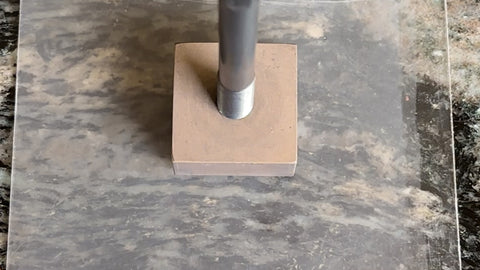
Branding Plastics
Share



When a fire-heated branding iron is used on plastic there is a good likelihood that the brand will be too hot for your material, leading to an over-branded mark with poor legibility.


This can be solved by using an electric heating tool and temperature control unit (also called a TCU).

With a TCU connected to the branding iron you can regulate the amount of voltage that is passed onto the heating tool which will allow you to adjust the level of heat that the tool produces.

This is especially important for marking plastic and rubber as they are much more sensitive and will take a better mark when branded at a lower heat level than other materials such as wood or leather.





One of the most common reasons for branding plastic is for personal identification of your belongings, which helps to discourage tool and equipment theft. By marking your tools with your business name, initials or phone number it makes identification of your personal or company equipment easy and removes any question as to the ownership of the tool.

This is especially important on a job site where there are many tools of the same model being used. This can also be helpful for marking business assets such as rental equipment or to identify and permanently label items that belong to a specific department.





Now let's talk about material displacement. When marking plastic with a branding iron you are melting the material and will want to have a design that has a good amount of open areas, and is composed of fairly thin line art. Bold areas will tend to over melt and displace the plastic or rubber or cause bubbling in the material, which can decrease the legibility of your mark and may also weaken the material itself.



Due to the plastic material melting when the iron is applied, we highly recommend adding a brass wire brush for removing excess material that gets stuck to the branding head. By cleaning your brand after marking, you will ensure your next mark has the best chance of being clear and easy to read. It will be easiest to clean the brand with the brass wire brush while it is still hot rather than allowing the small bits of plastic in the engraving to cool and get stuck there.


As with any material, you should always do a series of tests on the material you intend on branding to determine the best heat level and dwell time for your specific plastic or rubber material.


